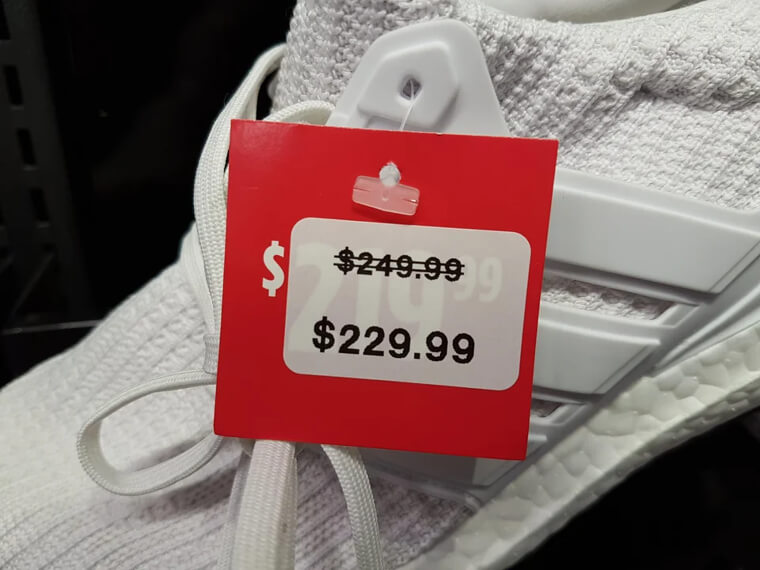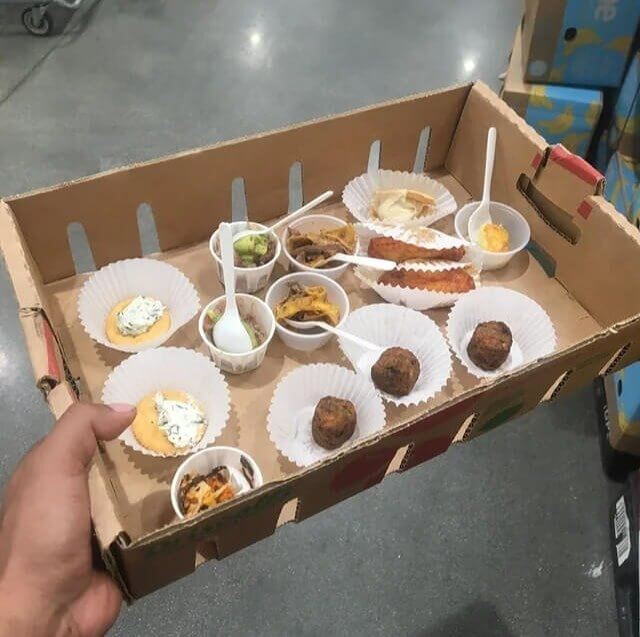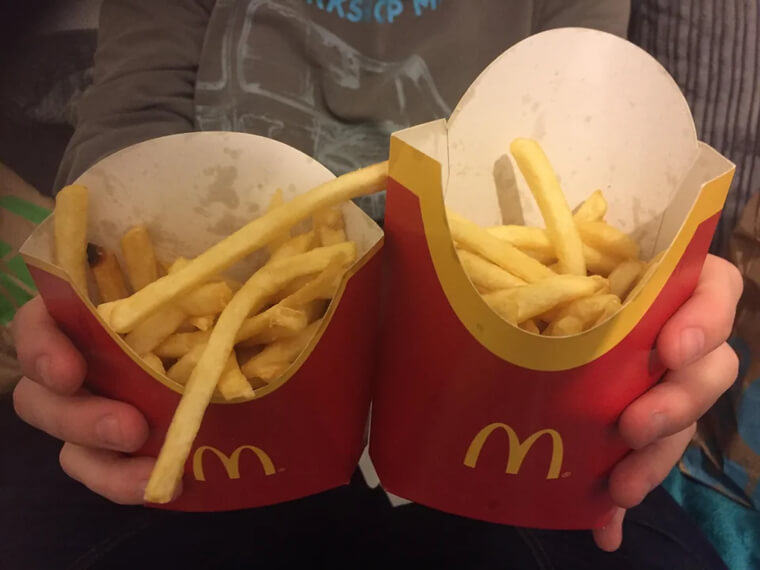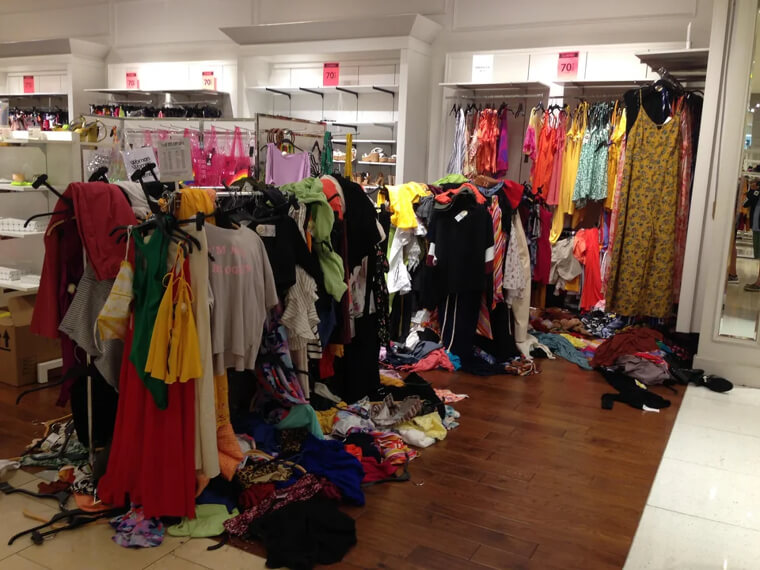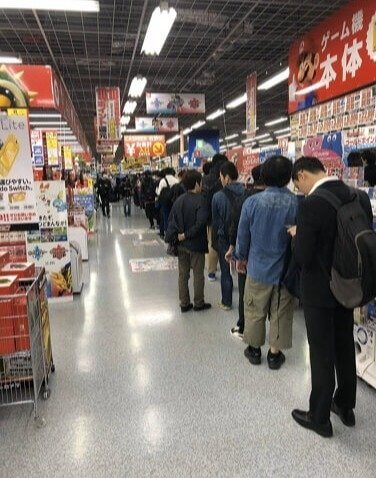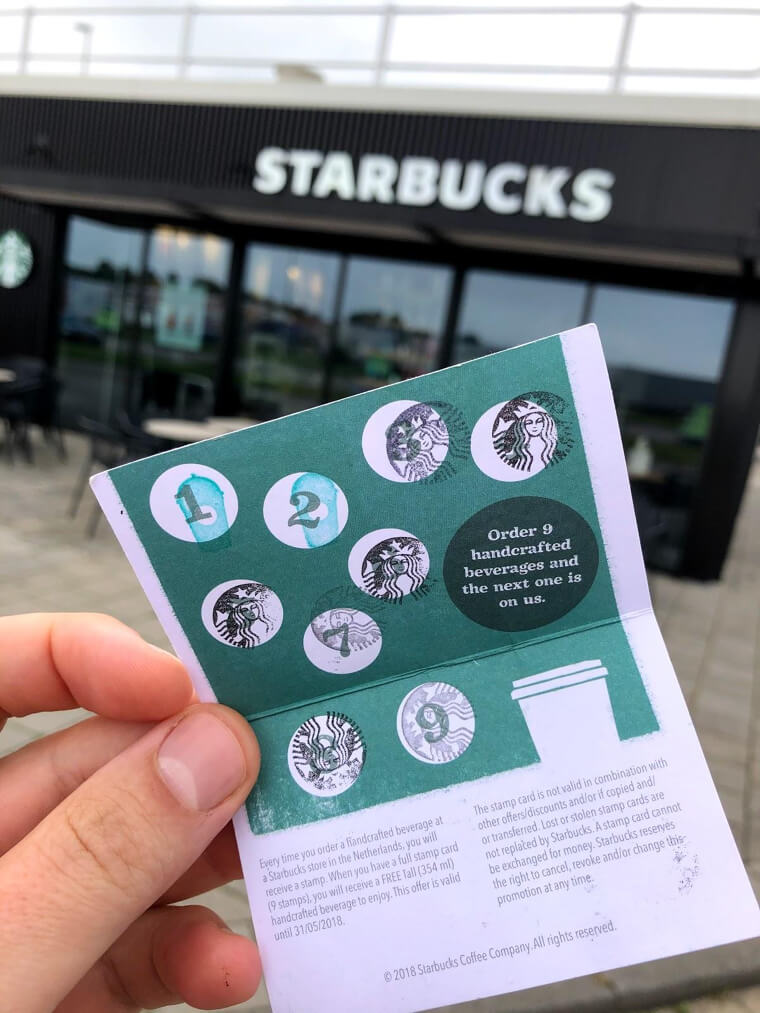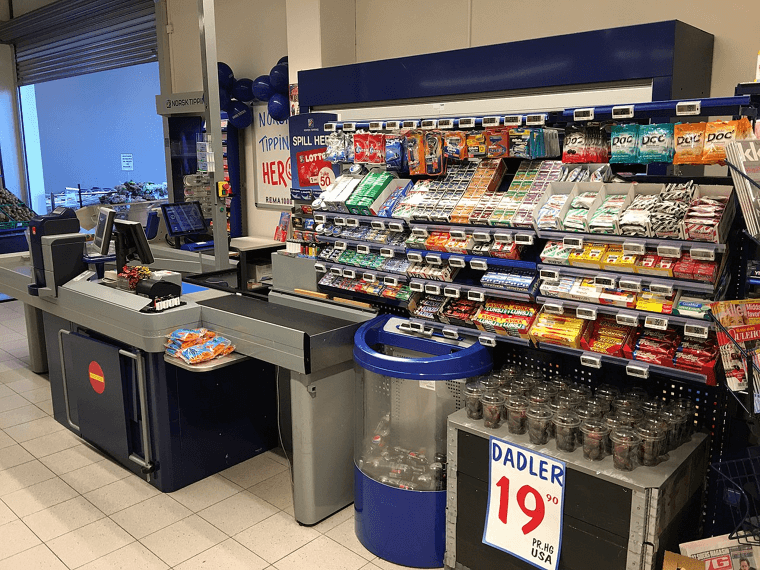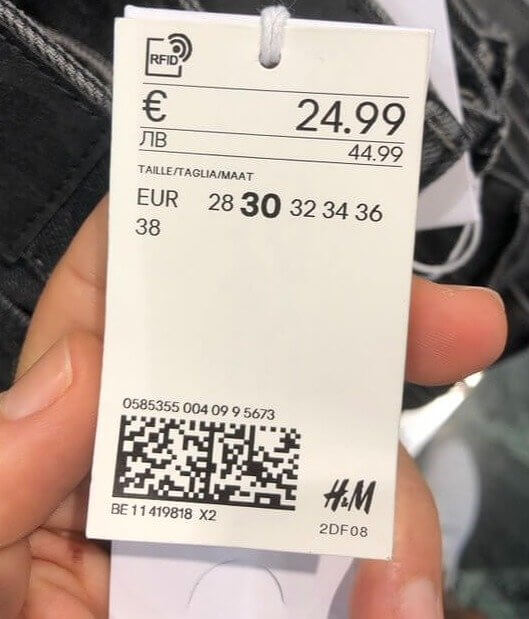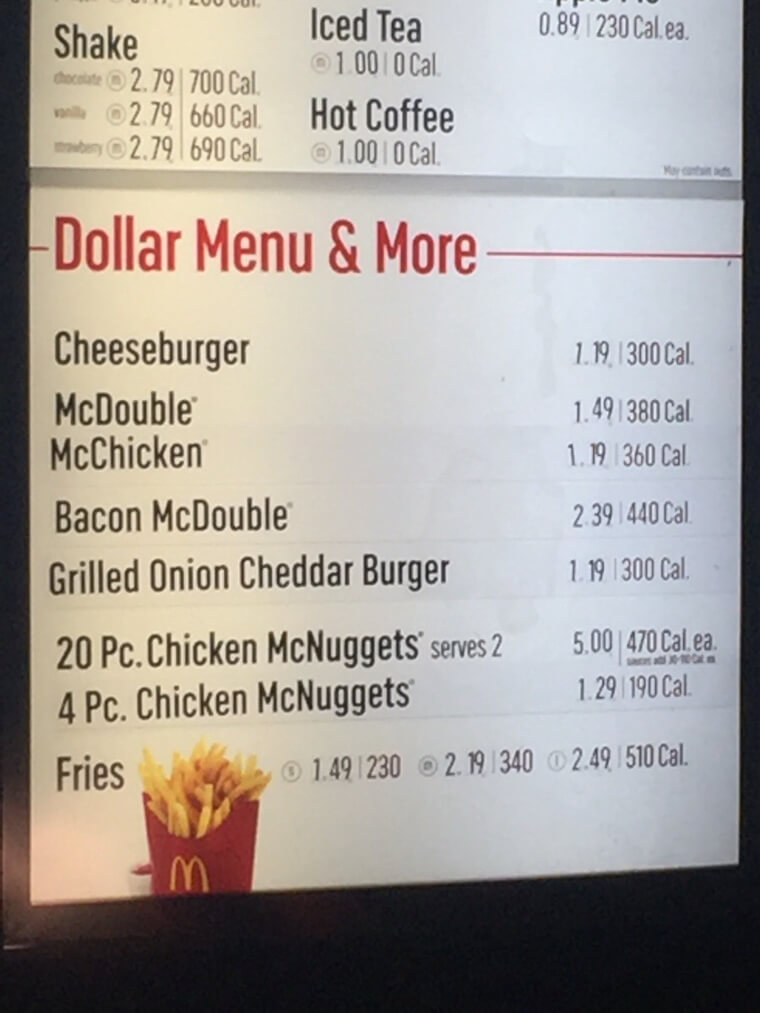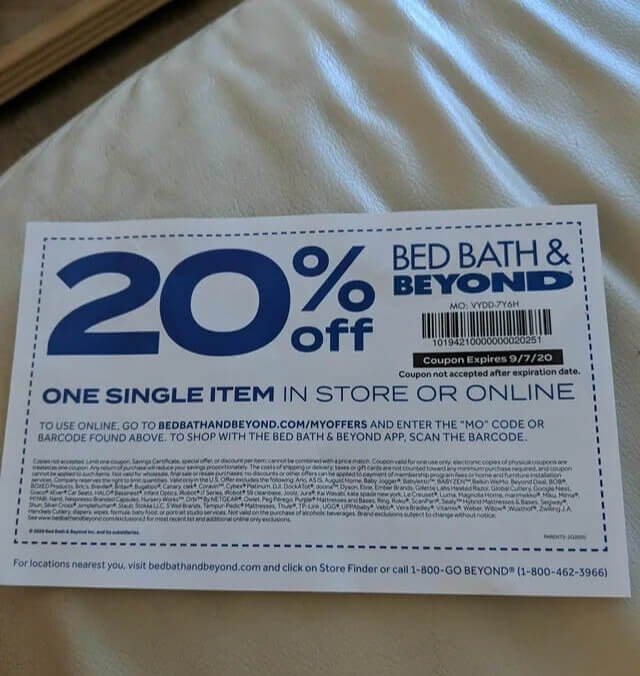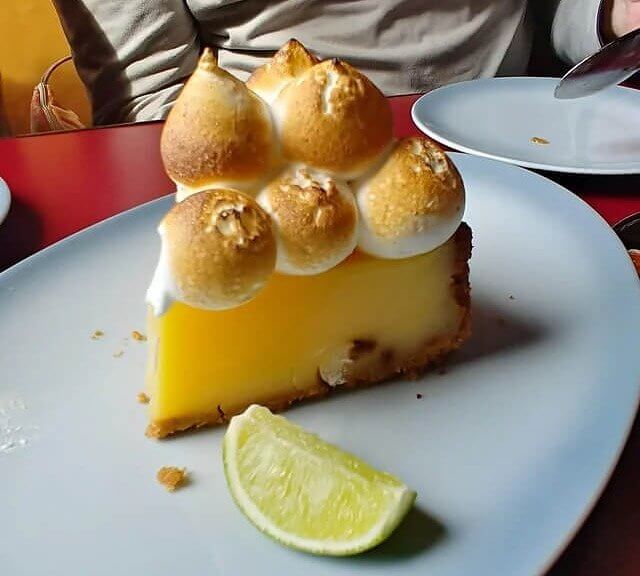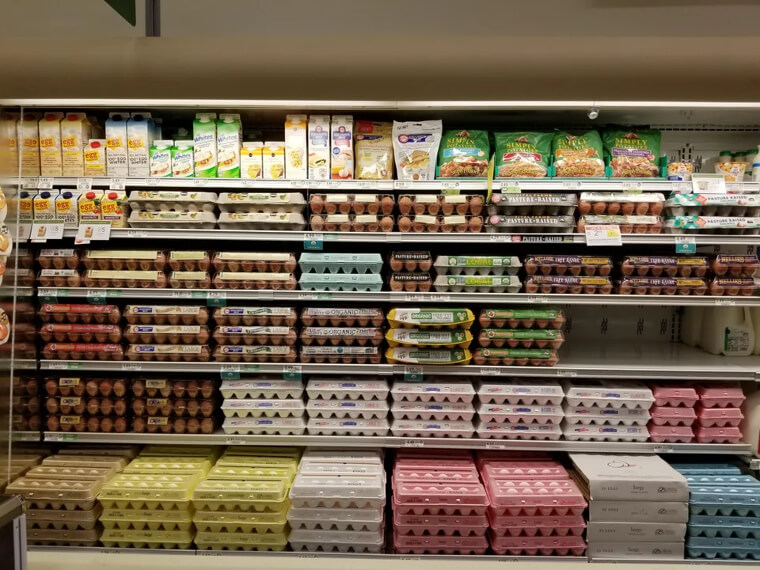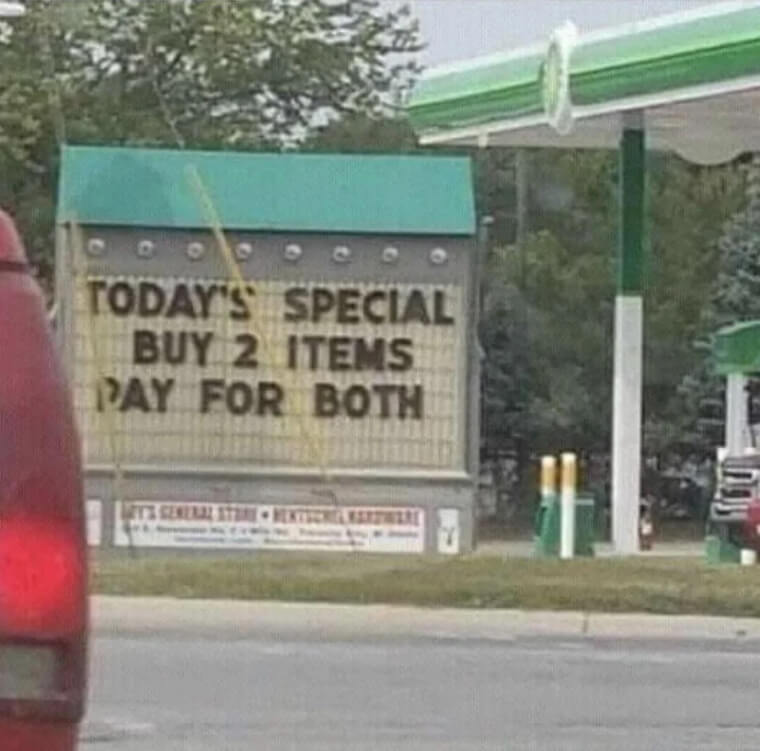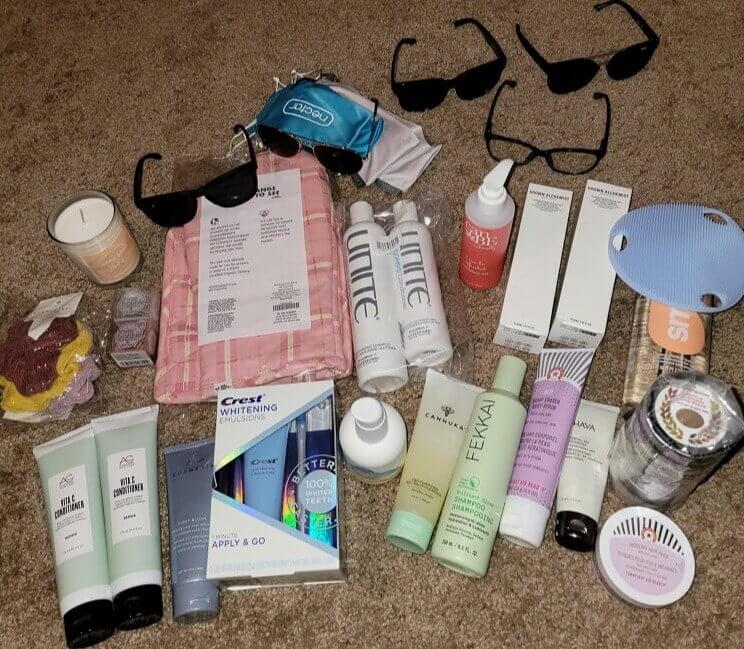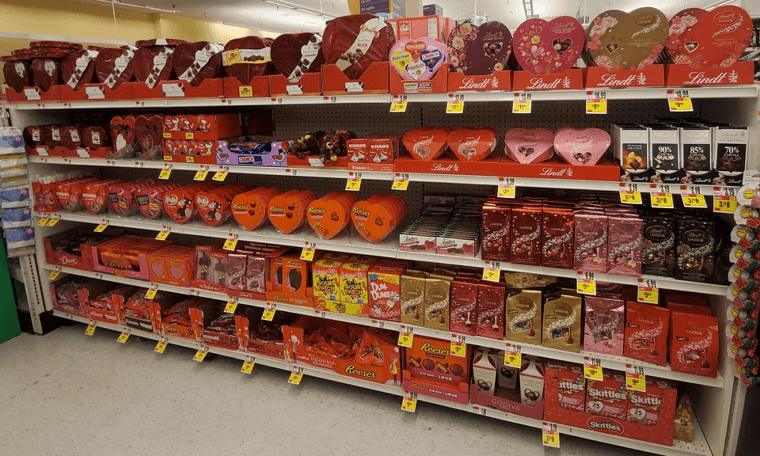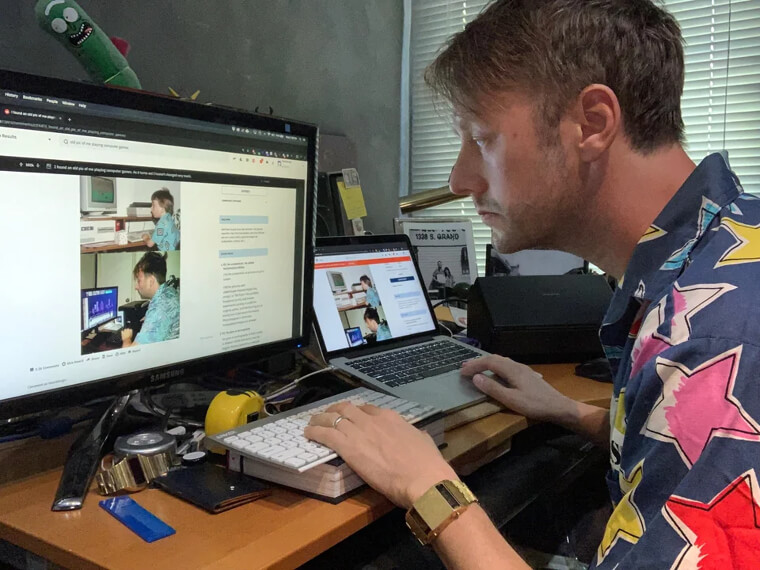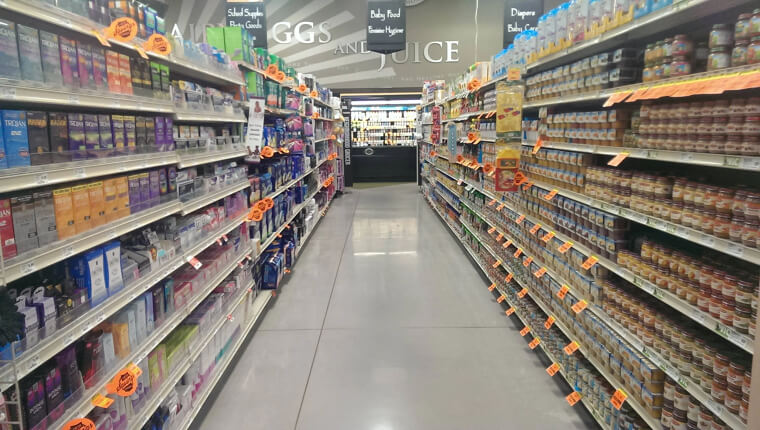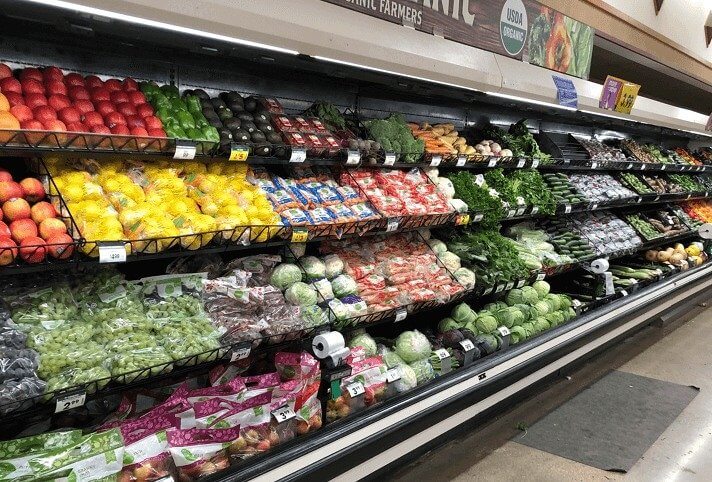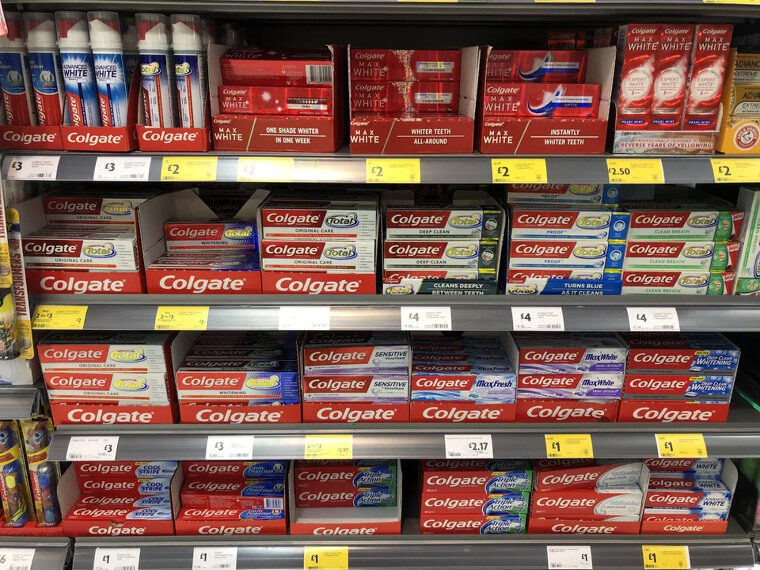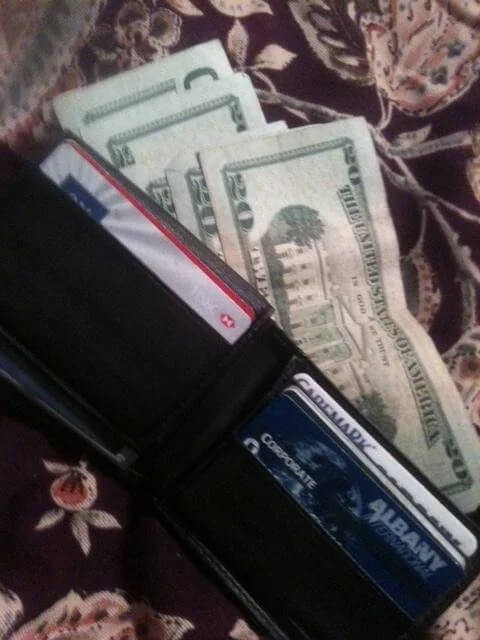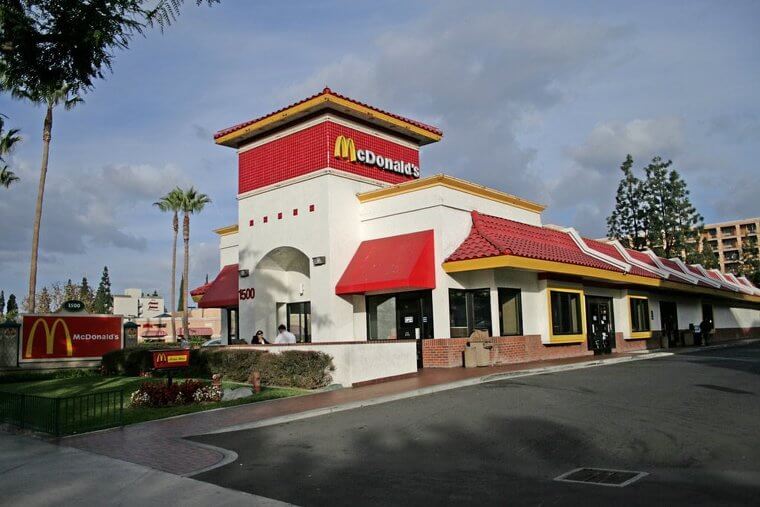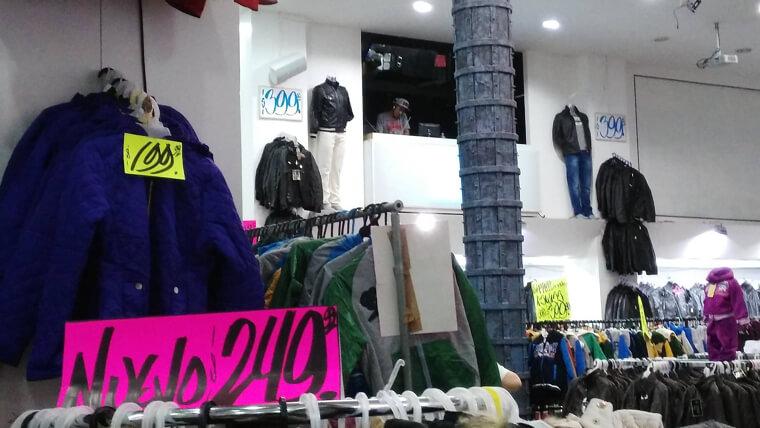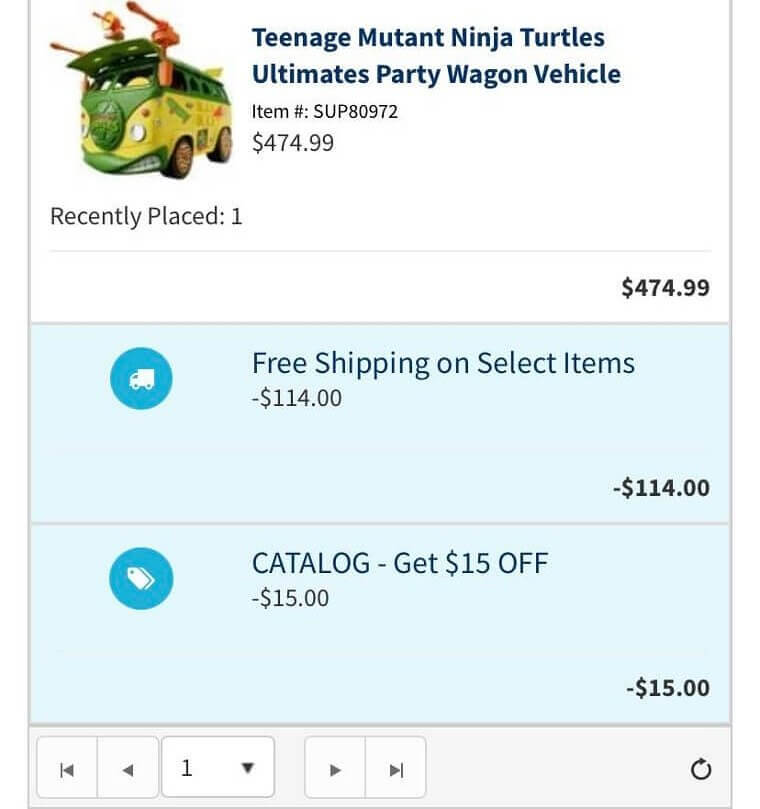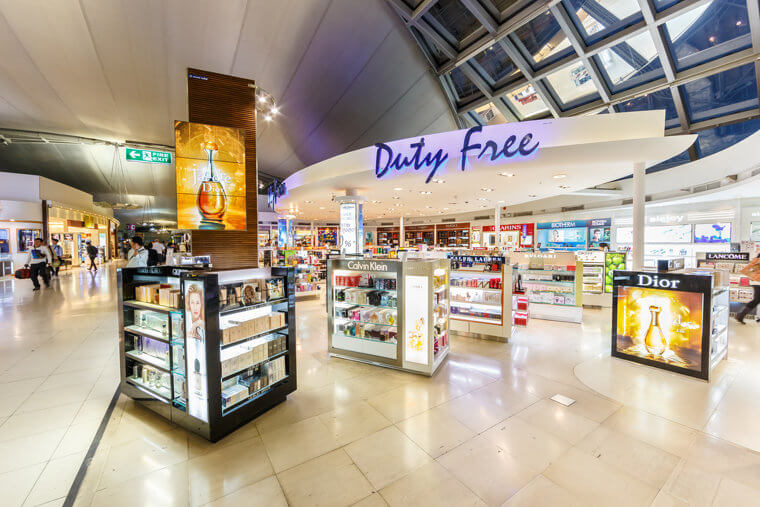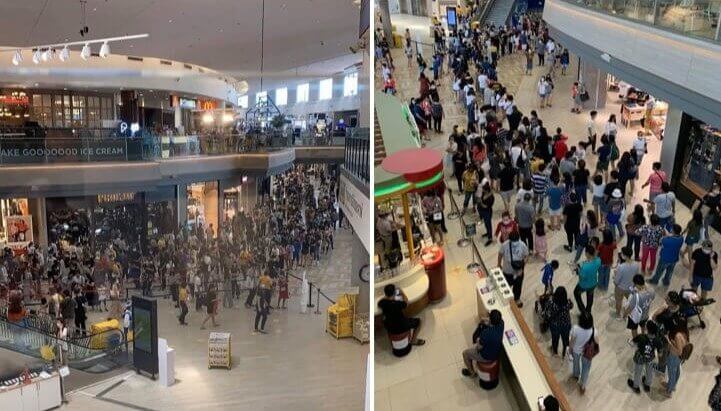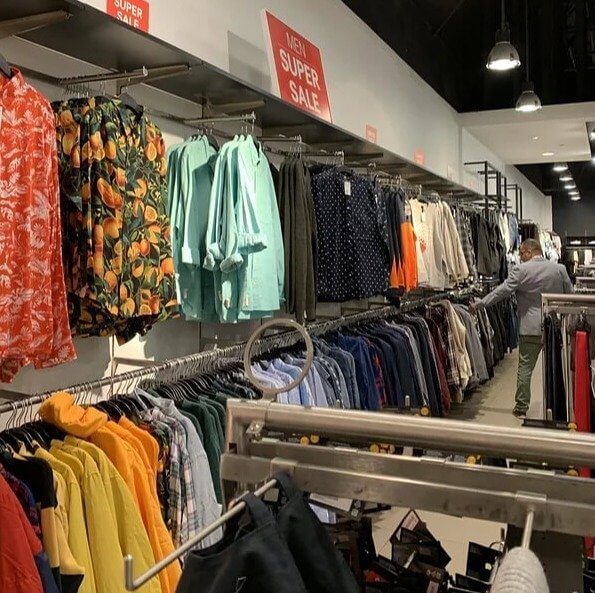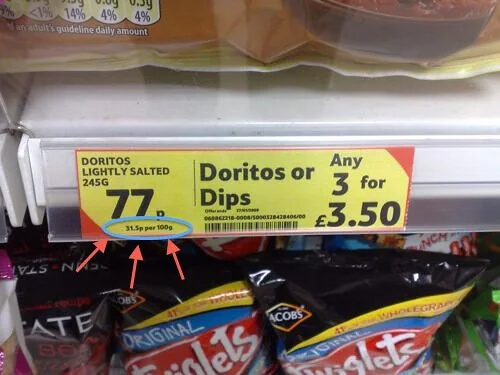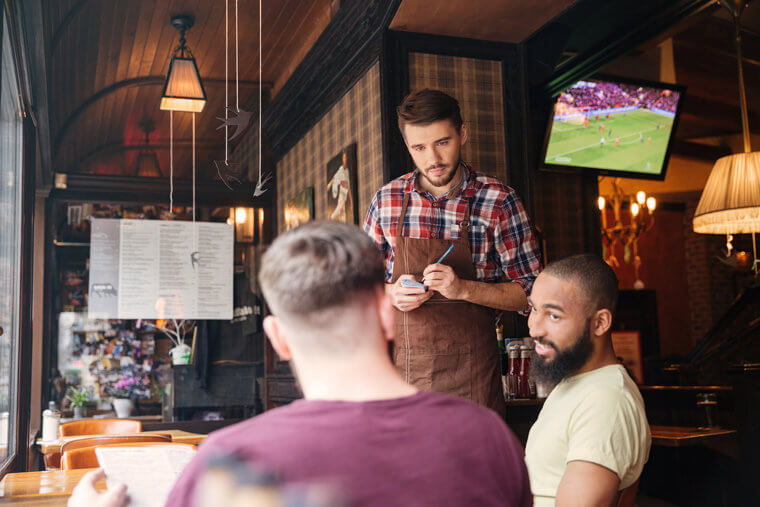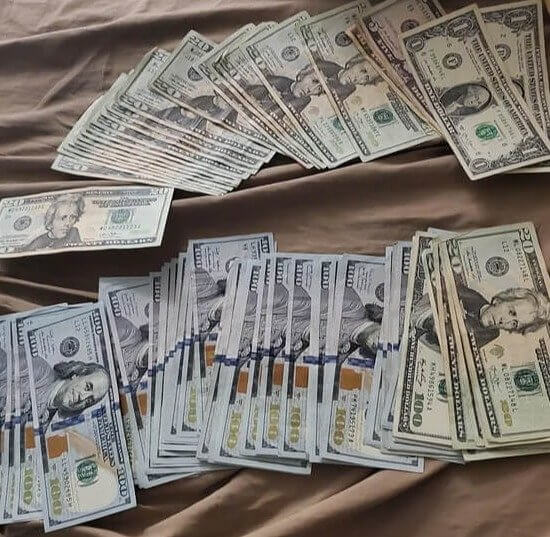Crossed-Out Prices Create an Illusion of a Better Deal
Price anchoring is a psychological technique used by retailers to manipulate customers' perception of value. By crossing out a higher price and placing a discounted price beneath it, the store creates the illusion that the customer is getting a great deal. This reference point of the original, higher price makes the discounted price seem like a good value, even though the store is still making a profit and actually tricking you.
Price anchoring is a powerful marketing trick that most places use to influence customers, so if you think something is a reasonable price, think again.
Those Free Samples at the Store Aren't Really Free
Who doesn't love free samples? Well, did you know that grocery stores frequently give out free samples to attract shoppers and encourage them to explore their products and spend more time in the store? This strategy is based on the principle that people are likelier to purchase items they have tried and enjoyed. Additionally, it gets you to spend more time overall in the store, which makes you even more likely to add more items to your carts, leading to an increase in overall spending.
Consumers need to be aware of this tactic and make informed decisions about what they purchase rather than being swayed by free samples. But this is just the start of how companies mislead you.
The Deceptive Cost of Upgrading to Large Fries
Fast food restaurants often use the decoy effect to make customers perceive the large fries as a better deal. By offering a medium-sized fries option at a slightly higher price, the large fries appear to be a more attractive option. This psychological trick is known as the decoy effect and is used by many businesses to influence your decision. Yet, this isn't exclusive to fast-food restaurants and is used by other companies too.
The same concept is applied by movie theaters when selling popcorn, offering a medium size close to the price of the larger sizes to make the larger size appear like a better value.
Clearance Sections Are Kept Messy so You Will Buy From New Collections
Retailers understand that a cluttered and disorganized clearance section can be overwhelming for customers, making it difficult to find what they're looking for. As a result, customers are more likely to give up on searching for deals in the clearance section and opt for the neatly organized racks of new collections instead. However, this only steers customers away from discounted items and towards the new, more expensive collections in hopes they spend more money.
Whether it's clearance sections in a retail store or food in a restaurant, you'll be surprised to learn it doesn't stop here.
Calling Something Chocolatey Doesn't Mean It's Made of Chocolate
You may be misled into buying products labeled as "chocolatey" that do not contain enough chocolate to be considered actual chocolate. This labeling trick entices customers to purchase these products, even though they may not have the amount of chocolate they expect. Be wary of these deceptive marketing tactics, and always check ingredient labels to ensure you're getting the chocolate content you desire! The labeling does not always reflect the truth.
Next time you think something has chocolate and realize it's hardly "chocolate-flavored," you'll know it's just a clever marketing tactic and look for products with real chocolate.
Limited-Time Offers Pressure You to Make Impulse Buys
Marketers often use limited-time offers to create a sense of urgency and pressure customers into making impulsive decisions. This can be seen in phrases such as "200 people have this in their cart" or "Offer expires in 48 hours". These tactics aim to make customers feel like they need to act fast in order to secure a good deal and often end up spending more money than they would have.
However, it's essential to be aware of these marketing strategies and take the time to think through a purchase before being swayed by the illusion of a limited-time offer.
Loyalty Programs Get You to Spend More for Rewards
Loyalty programs are designed to encourage customers to spend more money at a particular store or brand. By offering rewards for repeated purchases, companies hope to create a sense of loyalty and commitment. This can result in customers spending more money than they would have otherwise to earn the rewards. For example, customers may visit the same coffee shop daily to earn punch card rewards or spend more money at a gas station to earn points.
Although these programs can be enticing, it's important to understand that the ultimate goal is for companies to make a profit, and there are dozens of other ways they try!
Candy Is Strategically Placed Near the Registers for Impulse Buys
Stores often place candy and small items near the cash register to encourage impulse purchases. This marketing technique takes advantage of customers' waiting time while they're in line to buy other things. The idea is that while waiting to pay, customers may mindlessly grab a piece of candy or a small soda, as they are low-cost items that they can easily add to their purchase without much consideration. It seems harmless, right?
However, these are usually products that customers may not have planned to buy in the first place, so the placement of these items is strategically chosen, so you spend more money.
How $24.99 Seems Cheaper Than $25
The phenomenon known as "charm pricing" takes advantage of how the human brain processes numbers. The idea is that when the first digit of a price is reduced by 1, the product seems much cheaper. For example, $24.99 is perceived as being less expensive than $25.00, even though they are only pennies apart. This technique is used to make products seem more affordable and to encourage customers to make a purchase.
This tricks people into buying more but be wary because companies use so many more techniques in addition to this.
Removing the Dollar Sign From Menus Tricks the Customer to Buy More
Removing the dollar sign from menu prices is a typical trick restaurants use to disassociate the cost from actual money. Although $5.00 and 5.00 both represent the same amount, research has shown that the absence of the dollar sign helps customers focus on the dining experience rather than the cost. This psychological tactic means you are more likely to relax, be less aware of the the actual cost, and order higher-priced items.
Don't fall for the trap and end up buying more than intended due to the illusion of a lower cost. With all this insight, get ready to only start saving money from now on!
Ads With Puppies and Children Make Them More Relatable
Nostalgia is a powerful marketing tool. It has been found to reduce the desire for money and make people more willing to pay for purchases. This is why many advertisements feature sentimental themes, such as families, children, and puppies. These images evoke emotions and memories from our past, making us feel more connected to the product and willing to pay more. Marketers leverage this phenomenon, and research has shown that it works repeatedly.
Uncovering this tactic can help you make smarter, more purchases and not just pick the cuter packaging with a puppy.
Larger Numbers Create the Illusion of a Bigger Discount
It's incredibly common to label discounts with larger numbers to make them seem better and more appealing to customers. This is why a 20% discount on a $50 product can appear to be a better deal than a $10 discount, even though they are equal in value. This trick works by making customers more likely to purchase the product. But now you can avoid the trap of false savings and protect your wallet.
It's important to be aware of this marketing technique and to do the math to determine the actual savings rather than relying solely on the advertised discount.
Descriptive Names Entice You to Buy More Food
Who knew the name of a product could make such a difference? Well, food products with descriptive dish names tend to sell way better than those with non-descriptive names. This is because descriptive words can evoke emotions and trigger our imagination, making the food sound more appealing. For example, "Grandma's Favorite Lemon Pie" sounds more delicious than "lemon pie." This highlights the importance of descriptive food labeling for marketers, as it can significantly impact sales.
By understanding this, consumers can make more informed decisions since the misleading doesn't stop here.
Customers Will Pay More for Items They Can Touch and Hold
This may seem weird, but items are deliberately placed on shelves and tables for customers to touch. Research shows that customers are more likely to purchase things they can physically see and hold. By allowing customers to feel and experience the product, retailers create a sort of attachment to the item or psychological ownership. After doing this, you're immediately more likely to buy the item, but if you keep this in mind, you might think twice.
Knowing this common trick, you may realize that your desire to purchase an item only stems from holding it and walking around the store, but this isn't the only way stores are getting you to spend more.
Essential Products Are Kept in the Back of Markets so You Grab More
Supermarkets keep essential products, like bread, milk, and eggs, in the back of the store for a reason. By requiring customers to walk through multiple aisles, they increase the chances that customers will grab additional items, leading to higher sales. This strategy is dependent on the more time customers spend in the store. The longer they are there, the more likely they are to add additional items to their carts.
This is why supermarkets carefully design their layouts to encourage customers to roam the aisles and make impulse purchases. Understanding this tactic can help consumers stick to their shopping lists and avoid overspending.
Buy One Get One Free Deals Are Misleading
"Buy One Get One Free" deals can be misleading, as they often encourage customers to purchase products at full price, sometimes even leading them to spend more than they initially intended. The perceived savings from getting a second item for "free" can cloud one's judgment and result in overspending. In reality, the prices of the products being sold in this type of deal are already inflated to account for the "free" item.
It's important to evaluate the actual cost of these deals and compare them to other discounts or sales to determine if they are truly a good value.
Product Bundles Make People Feel Like They're Getting Their Money's Worth
At first, product bundles seem like a great idea. But they can be a trap for unsuspecting customers, leading them to spend more than they would have if they only bought the items they truly wanted in the first place. These bundles often include extra items at a "discounted" price, making it seem like a good deal. However, the cost of the main item is often increased to account for the supposed savings on the extra item.
More often than not, the extra items are not actually worth the price you are paying, even though they seem enticing.
Using a Gift Card Often Makes You Spend More Than You Expected
Have you ever seen a gift card sale? Maybe you buy a $25 gift card for only $20, so it feels like free money. This promotion can appear to be a good deal for the buyer, but there's a game plan behind this. Once you use the card, you're likely to spend more than the value of the card. Even if you don't use it, the company already has the money for the card.
So, even though it appears as a discount, it's actually a smart marketing strategy that encourages customers to spend more. Keep reading, and you'll discover there are tons of strategies just like this you've been falling for.
Every Holiday Is Turned Into a Gigantic Sales Event
Retail stores take advantage of holidays to boost sales by offering holiday sales. The idea behind this is that people tend to be in a better mood during holidays, making them more willing to spend. Holidays provide a sense of excitement and joy, and retailers use this to their advantage to attract customers with discounts and promotions. People are more likely to splurge on luxury items during the holidays, and retailers are well aware of this.
Additionally, holidays are a time for gift-giving, so retailers offer special deals to attract shoppers. However, these sales are just one part of the many other tactics in this list that you didn't know companies were using on you.
Free Trials Are a Sneaky Way to Get People to Pay for Subscriptions
Free trials are a standard tactic companies use to encourage customers to try their products and services before committing to a purchase; it sounds great at first but at what cost? They're often marketed as a "good deal" for customers, but in reality, it's a sales technique designed to encourage customers to subscribe. Now that they've invested time and effort in setting up the service, they don't want to start again with a different product.
Another sneaky intention is that the customer will forget to cancel and end up paying the premium anyway, and it's not the only ploy companies have.
The Most Expensive Items Are Placed at Eye-Level
Grocery stores strategically place their premium products on eye-level shelves because they know that is where most customers tend to make their purchases. Retailers understand that customers are more likely to purchase items that are easily visible and accessible and therefore place the most expensive products in this prime real estate. It is important to be aware of this tactic and check both the top and bottom shelves for products that might be more budget-friendly.
Doing so can lead to significant savings and help shoppers avoid overpaying for items they might not even need.
Fruits and Veggies Are Always at the Entrance to Make Shoppers Feel Healthy
It may seem irrelevant that healthy items are always at the entrance of a store, but there's a marketing tactic to this choice. It makes it easier for shoppers to make healthier choices, which can lead to a guilt-free shopping experience. When shoppers feel good about themselves for choosing fruits and vegetables, they are more likely to indulge in less healthy items later in their shopping trip, adding extra items to their cart.
By placing healthy and unhealthy items in strategic locations, supermarkets can increase sales and profits. They are subconsciously convincing people to buy more products!
Brands Send Products to Influencers so People Think They're High-Quality
Brands send free products to influencers in exchange for them to promote the product to their followers, creating a social proof that it is a good product. This type of marketing has become extremely popular, as people tend to follow the recommendations of people they trust, such as their favorite influencer, rather than ads from the brand itself. By utilizing influencer marketing, brands convince people their products are genuinely well-liked but this isn't always the case.
Influencer posts are sponsored, and their claims might not actually be true. So it's important always to do your own research beforehand.
9 Out of 10 Dentists Don't Really Recommend That Toothpaste
Using statistics and numbers in marketing provides evidence and credibility to support the claims being made. However, the truth can be stretched or manipulated to fit the desired outcome. Especially marketing messages such as "9 out of 10 specialists recommend" that are meant to evoke trust, but it's important to be aware that these numbers can be misleading. When you see these ads, you must first consider their validity carefully.
It's an incredibly effective way to get you to choose their product over another company, but don't take the information literally. It's just another marketing trick to get you to spend money.
The Domination Effect Is Getting You Every Time You Shop
The domination effect refers to the tendency of people to spend more money when paying with smaller denominations of currency than larger bills. This is because spending smaller bills doesn't create a psychological burden, and people may not realize how much they have spent. So how do stores use this to their advantage? By placing small-priced items near checkout lines to take advantage of this effect and encourage impulsive purchases.
To avoid falling prey to the domination effect, it's important to be mindful of your spending habits and keep track of your purchases, even when using smaller denominations!
Fast-Food Restaurants Use Red on Their Logos to Trigger Appetite
It might seem crazy, but there is a reason why most fast-food chains use the color red in their marketing. Not only is it a bold, eye-catching color that draws attention, but research has shown that red increases heart rate, which is associated with hunger and cravings. Therefore using red in logos and signage evokes feelings of hunger and drives customers to their restaurants, making people more likely to make impulsive food choices.
Marketing techniques are at play at all times, influencing your decision-making, so next time you pass by a fast-food restaurant, take a second to think, are you really hungry, or is psychology at work?
Playing Music or Live DJs Get You to Shop More
Music has the power to influence emotions and create a desired atmosphere. Retailers know this, so they often play music in their stores. The music sets the tone and puts shoppers in a positive, upbeat mood, making them more likely to spend money and enjoy the shopping experience. Upbeat and cheerful music can create a festive atmosphere, while slower, more relaxing music can encourage customers to take their time and enjoy the store.
It's a simple yet effective way to get you to buy more things ultimately! Despite the music creating a positive mood in the store, be aware of this marketing tactic so that you don't overspend.
Free Shipping Really Means It's Hidden in the Price of the Product
Companies that offer free deliveries sound amazing, and who wouldn't want something for free? However, it's not as free as you think. The overall cost of the product may appear cheaper, but the customer is actually paying for the delivery in the form of a higher product price. This marketing tactic is meant to make you feel good, but it's deceiving and makes it difficult for customers to compare prices accurately between different companies.
Customers should be aware of this practice and understand that the cost of delivery is often factored into the product price beforehand rather than being a separate charge, so you're spending just as much as the company intended for you to.
Online Stores Lure You With Discounts for Abandoned Items
Online shopping can be a great way to save money if you're willing to wait for a discount. Online retailers use cart abandonment campaigns to incentivize customers to complete their purchases. These campaigns use email marketing tactics to send customers discount codes or promotions after they've left items in their online shopping carts. By waiting a few days before making a purchase, customers may receive a reward for their patience.
It may seem like all of these tactics take advantage of you, but with this insight, you can outsmart the stores by knowing to input your email into the shopping cart before leaving the website for that discount!
Duty Free Stores Are Placed Where the Most People Walk by
Duty-free stores are designed to maximize exposure to as many products as possible. Their placement in high-traffic areas of airports, such as near gate areas, and the specific path passengers are encouraged to follow through the store is a deliberate tactic to increase sales. By placing the stores in areas where passengers have time to kill before boarding and guiding them through the store, duty-free shops can take advantage of travelers' impulse buying behavior.
The idea is that the more products a passenger are exposed to, the more likely they are to make a purchase, but knowledge of this marketing trick can help you avoid falling for it and overspending.
Malls Are Designed to Make You Lose Track of Time and Shop More
Malls are often designed to make shoppers lose track of time, leading to longer stays and increased spending. One tactic malls use removing or hiding clocks and windows. By not knowing what time it is or how long you've been there, shoppers are less likely to be aware of the time constraints and continue browsing and making purchases. However, you can avoid this tactic if you manage your time and budget while shopping at malls.
This lack of orientation and time is similar to the design of casinos, where time is deliberately distorted to keep patrons playing and spending.
Stores Change Their Layout Frequently to Make You Walk All Around the Store
It's time you knew exactly why retail and grocery stores change their layout every few months. It's meant to encourage customers to walk around the store and potentially purchase items they didn't plan on buying. This strategy capitalizes on the customer's subconscious and has proven to be an effective sales tactic. By rearranging the store's layout, customers are forced to navigate unfamiliar territory, making it easier for them to stumble upon unplanned purchases.
While not all stores engage in this practice, it is common enough to be a recognized phenomenon in the retail industry and is working at convincing you to spend more!
Cheaper Items Are Placed Next to Expensive Ones to Seem Like a Good Deal
Stores use the tactic of placing a more expensive version of a product next to a similar but cheaper item to make the latter appear more appealing. This illusion is created to influence the customer's perception of the cheaper product and make it seem like a great deal in comparison to the inflated price of the more expensive item. But it's merely a way to make you buy a product and justify how much money you are spending.
While sometimes the expensive item is genuinely a premium version, other times it is merely a pricing strategy to make the product the store wants to sell seem more affordable.
Restaurants Announce Specials With No Price to Push Goods Before They Expire
Restaurants often announce their specials without pricing and enticing language to play on the embarrassment of customers who may not want to ask how much the dish will cost in front of their dining companions. This strategy is designed to push goods close to their expiration date. A marketing trick that restaurants are aware puts customers in an awkward position. However, with this understanding, you can confidently ask about specials and avoid unexpected costs.
This practice in the restaurant industry, where pricing information is kept hidden and meant to encourage customers to spend more money, is simply outdated.
Prices Listed in Payments Rather Than a Lump Sum Dupes People Into Thinking It's Less
Advertising prices in installments instead of a lump sum is a common tactic to anchor the smaller amount in the customer's mind. Our brains tend to focus on the smaller amounts advertised and ignore the larger total price, even though we know that one installment is not the full cost of a product. By presenting the cost in smaller installments, companies aim to make the product appear more affordable and encourage customers to make a purchase.
Be aware of this technique and avoid being convinced to spend money on something you may not consider too expensive if the total cost was presented upfront.

